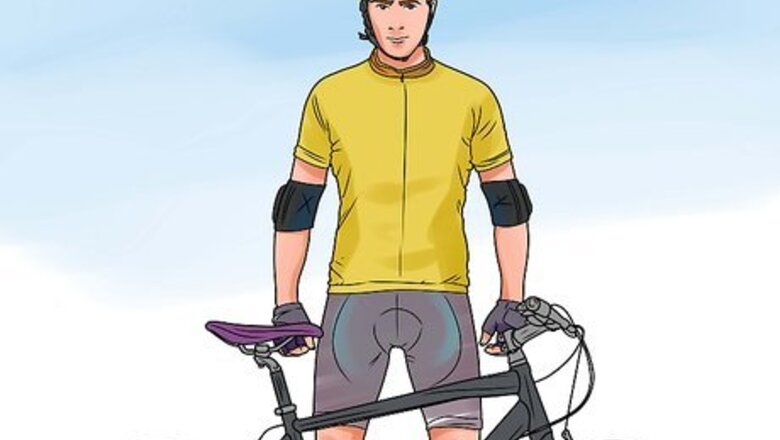
views
Practicing on a Bicycle
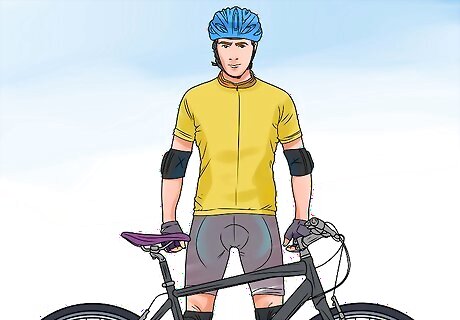
Wear your protective gear. You won't need the same level of protection when practicing on a bike, but it's always good to practice safely. Make sure you're wearing a helmet, at the bare minimum, and knee and elbow pads if you want to be really careful. While starting wheelies on a bike may seem totally harmless, you can still take some bad spills and hurt yourself.
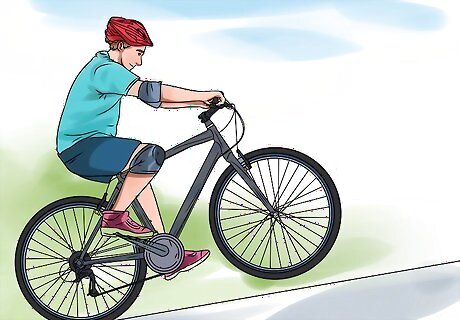
Practice while riding uphill. Start at an easy gear. Two or three is probably best, so there won't be too much excessive pedaling. The hill shouldn't be too steep, but learning on a nice, gradual slope can help you maintain your balance and keep your front wheel in the air. When you're learning to wheelie, your pedaling may become spastic, causing you to fall off the bike. The resistance of pedaling uphill will counteract those forces. That way, when you practice on flat ground, you'll maintain a straighter trajectory of motion. It's not necessary, but it is easier to practice on a mountain bike, rather than a BMX bike. Their back wheels are much more stable, and the front of the bike will come up more easily. The large wheel base will also make you feel more powerful.
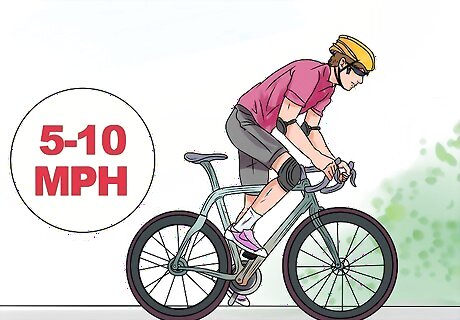
Maintain a comfortable speed on flat ground. This speed will vary on a case-by-case basis, but you can aim for somewhere between 5-10 MPH.Moving too quickly might cause you to lose control when you're only on one wheel. If you go too slowly, however, you may not have the momentum to properly lift the front into the air.
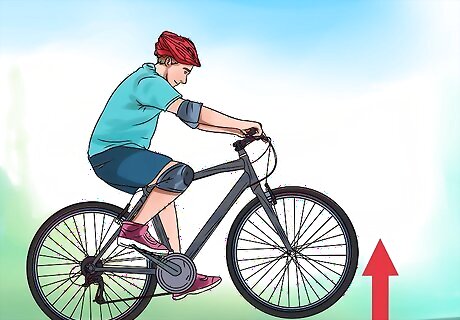
Pull your front wheel into the air. This will require some brute force from your upper body, as well as some powerful pedaling. Crouch over your front handlebars to prepare to pull up, and don't forget to look forward. Once you have the handlebars in the air, lean your weight back and continue pedaling. You may lose balance or not keep it up for long, but eventually, you'll feel yourself sinking into the wheelie for a longer period of time.
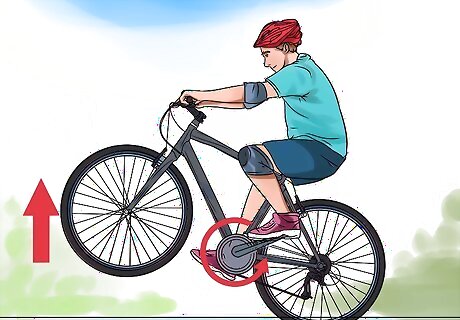
Maintain your motion in the wheelie. Once you've gotten the front wheel in the air a few times successfully, you'll want to start riding the wheelie for longer. When you're in the air, soften your grip and extend your arms. You also want to use your rear brake to adjust your leverage while in your wheelie. Some people keep the rear brake held for the duration of the wheelie, while others simply tighten their grip on it when they feel the front wheel coming too high into the air. The harder you push on the brake, the harder you'll have to pedal to keep your front tire in the air.
Keeping Yourself Safe

Wear protective clothing. You never want to get onto a motorcycle without the proper gear. This includes a thick motorcycle helmet, leather gloves, jeans or leather pants, and a strong leather jacket. You also want some strong boots, preferable leather, with some proper grip. When you're first getting started, it's also not a bad idea to wear elbow, ankle or knee guards, as you'll be going down a lot.

Find a secluded street or road. Remember that learning this will take you quite some time, and you'll probably take a couple bad spills. You don't want to harm any pedestrians around you or crash your bike into any cars, either mobile or parked. Your constant attempts are also going to make a lot of noise, so you don't want to disrupt those around you. It's illegal to wheelie on a street bike, so finding a secluded place to practice will also help you evade any trouble from law enforcement.
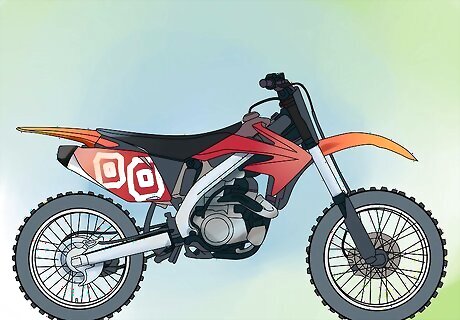
Learn on a bike with enough power. If you're attempting to learn the power wheelie on a sport bike, you'll probably want a 500 cc motorcycle, at the minimum. You'll be lifting the front wheel solely with your acceleration, so you want to make sure that your bike has the power to pull that off. You can also learn the power wheelie on a dirtbike. If you have access to one or want something a little more comfortable, this could be a smart idea. A 100 or 150 cc bike should have enough power to practice this stunt.
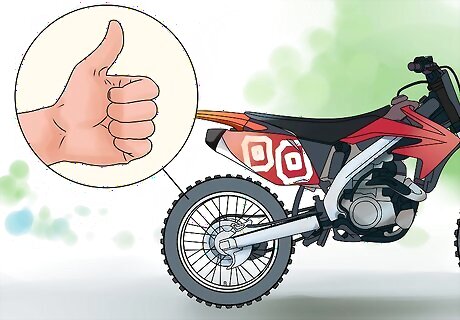
Check your rear tire for any damage.You'll be spending a significant amount of time on this back tire when you're practicing wheelies, so make sure that your tire is in good shape. You don't want any wobbling on that end. It's also ideal to run your tire pressure a little bit lower than you might normally, as it will make the wheelie more stable.
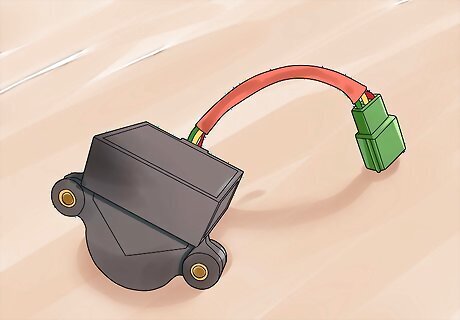
Remove a tip-over sensor if your bike has one. This sensor might cause your bike to shut off if you tip too far backward. You will be tipping backward, and because you're just learning, may tip even further back than totally comfortable. Make sure your bike doesn't give out on you mid-wheelie by removing this sensor. Your back exhaust may also hit the ground, depending on where it's located on your bike, so make sure that it won't tap the ground while you're on one wheel. If it does, you may grind the road and fall off of the bike.
Learning the Power Wheelie
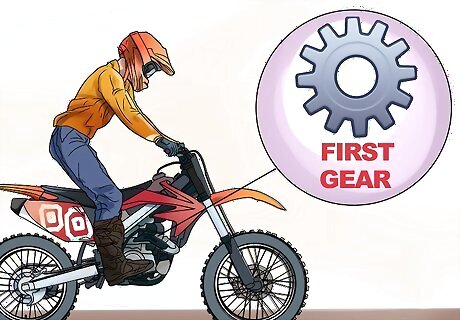
Put yourself into first gear. You can practice in any gear that you'd like, but first is generally the easiest for beginners. If you ever graduate to learning clutch wheelies, you'll have to know how to shift gears within the wheelie. Because power wheelies are simply about using your acceleration to pull the bike's front upward, you won't have to worry about shifting. Your back brake, much like the handbrake on a bicycle, will help you if you ever begin to tip too far backward. While riders often don't use the rear brake regularly, it's very helpful in your first steps of learning the wheelie.If you feel yourself moving dangerously far back, you can put some power on the rear brake, stopping your back wheel. This will quickly bring your front wheel down. Be careful when it's coming down, however, as you'll get some pressure in your direction upon impact.
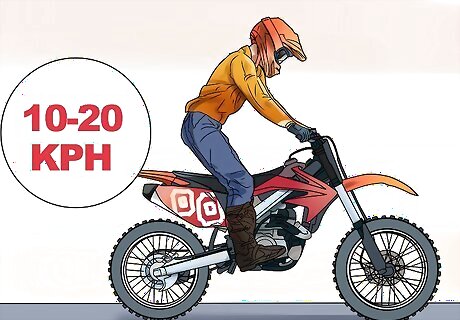
Bring your bike to a good speed. It's recommended that you start learning wheelies at a speed somewhere between 10-20 KPH. If you're moving too quickly, you may lose some control, causing you to crank the gas in an unsafe way. When practicing too slowly, however, you won't be able to pull the front wheel up with enough force.
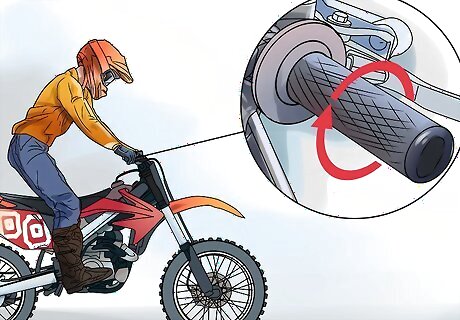
Let off the gas while still maintaining your speed. You don't want to slow down too much, but it's useful to lower your speed right before you accelerate into your wheelie. This will give you more of a kick when you hit the gas, and this extra power will bring your front wheel up more smoothly.

Crank the gas to accelerate and bring the front wheel up. Once you've dropped your speed a little, hit the throttle hard. As you're doing this, you'll pull the front of your bike up, like you're doing a wheelie on a bicycle.At first, these elevations will feel very slight, almost like bunny hops. As you become more comfortable lifting the front up, however, they will gradually become longer and longer. When you lift the bike off the ground and come back down too suddenly, your front tire is going to shake on impact. If you don't land straight, you'll flip off the bike over the front, otherwise known as a highside. This may happen when you're first getting started, so just make sure that you're bringing your wheelies as straight down as possible to avoid it.
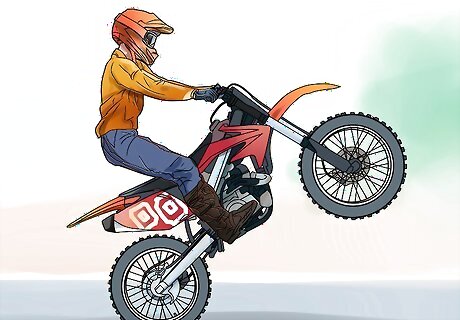
Maintain your balance in the wheelie. When finding your balance point, lean back on the rear side of the bike, making sure that the center of gravity of your system (you and the bike) sits in the center. This will help you ride the wheelie for a longer period of time. Any tipping forward or backward will mess with the center of your system, causing you to tip. When getting started, beginners might try to hug the tank with their knees, helping them hold on when the front wheel of the bike sticks up. This will actually prevent you from sliding backward against the seat. If you're stuck hugging the tank while your bike is going backward, then the gravity of the system won't be in balance.
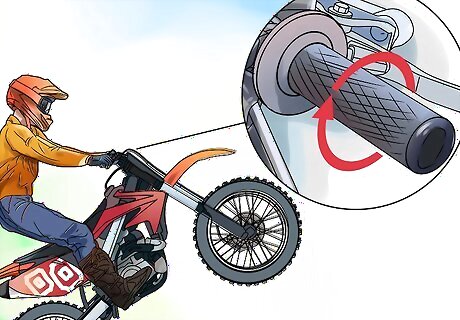
Reduce your throttle when you settle into a comfortable balance. When you feel yourself easing into the balance of your wheelie, you can reduce the throttle, just slightly, so you don't lose control when holding its motion. Reducing it too much, however, will cause your bike to lose all its momentum.
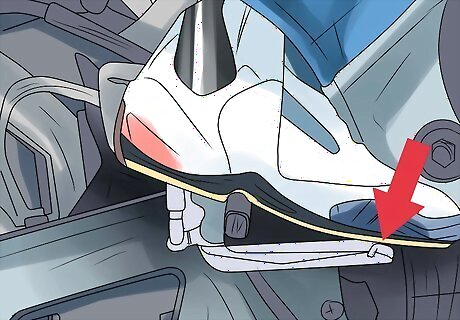
Step on the rear brake to guide yourself down. When you want to come out of your wheelie, you'll use the rear brake to bring the front end of the bike back onto the street. If you crank this too harshly, however, the front end is likely to crash down too quickly, and you may wobble or fall. To remedy this, you can increase the throttle as the front is coming down, balancing out your movement.


















Comments
0 comment